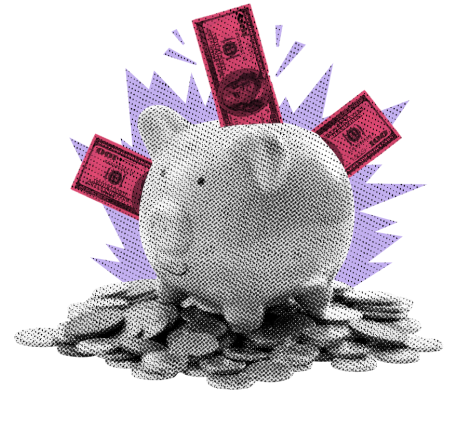
Rate cuts gave stocks their sugar rush, but can EPS growth keep the rally alive?
KEY TAKEAWAYS
-
Markets hit all-time highs across indexes following the Fed’s rate cut
-
Forward PEs for the S&P 500 have climbed above 22x, near Dotcom levels
-
Rate cuts provide support but don’t fix weak labor markets
-
Earnings growth is critical to sustain lofty valuations
-
History shows high valuations without substance end badly
MY HOT TAKES
-
The Fed gave markets what they wanted, but for the wrong reason–weak jobs
-
Valuations this rich require real EPS growth, not just lower rates
-
Investors are celebrating like Wonka kids, but the lesson is humility wins
-
We’re still in a risk-pricing regime, not a happily-ever-after market.
-
Earnings season is the real test of whether happily ever after is possible
-
You can quote me: “Rate cuts are Fed fairy dust, but only real earnings growth is the golden ticket.”
Don’t forget what happened to the man who suddenly got everything he always wanted… That is a snippet from a famous quote that capped the 1971 film version of Willy Wonka & The Chocolate Factory. The movie was based on the Roald Dahl book, which is an allegory about human vice and virtue, where each child character embodies a different flaw–greed, gluttony, pride, envy–and suffers the fitting consequence. The main character, Charlie Bucket, who resists temptation and shows integrity, inherits not just candy but the ultimate reward, symbolizing that humility and honesty triumph over excess.
Yesterday, all the major equity indexes–even the small caps–hit all-time highs. I am celebrating, of course. Who doesn’t want to see a growing portfolio? Nobody I know! 🤣 The boost can be traced back to the once-again benevolent Fed, which decided a day earlier to lower interest rates and guide for 2 more cuts before yearend. There were some hidden gotchas in there, but, for the most part, the policy, the release, and the Powell’s presser was generally on the positive side. I covered the “gotcha”, in depth, in yesterday’s blogpost/newsletter.
Markets have been thirsty for a rate cut since the Fed closed the taps after last December’s cut, largely in response to incoming President Trump’s aggressive tariff policy, fearing that it would cause raucous inflation and drive the country to fall back to a state of inflation chaos. In reality, inflation did tick higher–albeit slowly–and so did markets, but not so slowly.
Here is what’s at stake, stocks have been surging, and many are concerned that valuation multiples are stretched. Earnings have been respectable to date, but still, how to justify rich valuations getting richer became the challenge. Check out this chart and then keep reading.

This is a time series chart of the S&P 500 Forward PE Multiple (white line). You can see how it climbed slowly, but steadily from 2023 through the ‘24 elections, even though the Fed’s aggressive tightening cycle. As a very rough heuristic, PE’s below 20x (pronounced twenty times) are considered cheap, and above, rich. You can see the line breach 20x in early 2024 as AI got its legs in the markets, and it really took off a year ago after the Fed made its first oversized 50 basis-point cut. PEs were driven above 22x! “Unheard of,” you exclaim. Well, not really. They did hit similar highs in 2020 and 2021, but only briefly. If you extend the chart back 20 years to 2005, leading up to the pandemic, it came nowhere near 20x. Going back even further, the last time we saw forward PEs above 20x was 2002–that was the backend of the Dotcom bubble spike, and the bear market that followed pushed valuations back into the high teens. Following that, the Global Financial Crisis would push it to the low teens.
Ok, let’s take a step back. Price to earnings ratio is perhaps the most commonly consulted–and reported on–valuation metric. It is calculated by dividing a stock's price by its earnings per share. Literally P/EPS. If prices rise faster than earnings, a company’s PE will go up–it is said to become “more expensive.” Numerator bigger, denominator smaller, PE bigger; it’s just math, silly! But it’s important math. Why would a stock’s price climb faster than its earnings? Well, the best answer is: growth. If we expect great growth in the future, prices can go up in anticipation of those earnings beyond the forward earnings estimate. But by how much? What is realistic? That is the most contested question. We can guess where the economy may be in the future–clearly solid economic conditions are CRITICAL for the hoped-for growth.
Taking another step back. Solid economic conditions require strong consumption, and strong consumption requires confident consumers, and confident consumers… NEED JOBS AND JOB SECURITY. What can ensure that? Well, the Fed thinks accommodative monetary policy–lower interest rates. Markets think so too! You can see how valuations jumped in late 2024 as the Fed lowered rates, AND perhaps yesterday as the indexes surged to new highs.
By the way, you can see on the chart ☝️how the PE got hammered earlier this year. That was just math also–silly. It was the result of the huge selloff around “Liberation Day.” In that case, the good news is that earnings were strong (denominator). Prices fell faster than earnings, causing PEs to shrink, making stocks… well, cheap. We all know that it didn’t last too long, and by late summer (I think it’s still technically summer, for at least a few days 😢) valuations were back up to the low 20s.
Here comes the math again, silly. What could possibly allow prices to go higher and at least maintain these lofty 22x multiples? The answer is in the denominator–EPS. But how do we ensure that EPS will grow faster than prices beyond the year end? Lower interest rates? By the way, there is some more complicated math to justify this (interest rates are in the denominator of the terminal value of the theoretical DCF valuation of stocks), but I will spare you. It is, after all, a Friday morning.
Look, I hope that you understand, kind of at least, why markets were and remain so thirsty for rate cuts. They are needed to not only justify current valuation metrics, but also to possibly justify their getting even higher (referred to as expansion). Now it looks like those lower rates may be finally forthcoming. But should we celebrate? Remember that the Fed justified the rate cut by citing a weak labor market. Can the Fed’s cutting turn that around fast enough so that we don’t get a dip in economic growth before a turn-around? Let’s hope so!
But wait there is something else. Remember the PE equation? We can justify these PEs with fast growing EPS (denominator) regardless of interest rates. Where can we find those? Earnings season is coming up in a few short weeks, and answers to that question will surely come. For now, I understand that many are happy about rate cuts, but at the end of the day, only the real EPS growth will ensure long-term gains.
The movie quote I opened with, ends like this: “...he lived happily ever after.” Transcend gluttony and greed, and pick virtue and humility–good old, solid earnings growth–and you can have almost everything you want AND live happily ever after.
YESTERDAY’S MARKETS
Stocks rallied to new highs yesterday in the wake of Wednesday’s Fed rate cut and guidance. The Leading Economic Index came in lower than expected. 10-year Treasury note yields ticked higher and the 2/10 yield curve steepened further–pay attention. 🧐

NEXT UP
-
Fed speakers today Miran (the new guy) and Mary Daly.
-
Next week, we will get more housing numbers, PMIs, GDP, Durable Goods Orders, Personal Income, Personal Spending, and PCE Price Index, and lots more Fed speak. Check in on Monday for weekly calendars and your chance to one-up the competition and possibly get that golden ticket. 😉
.png)

